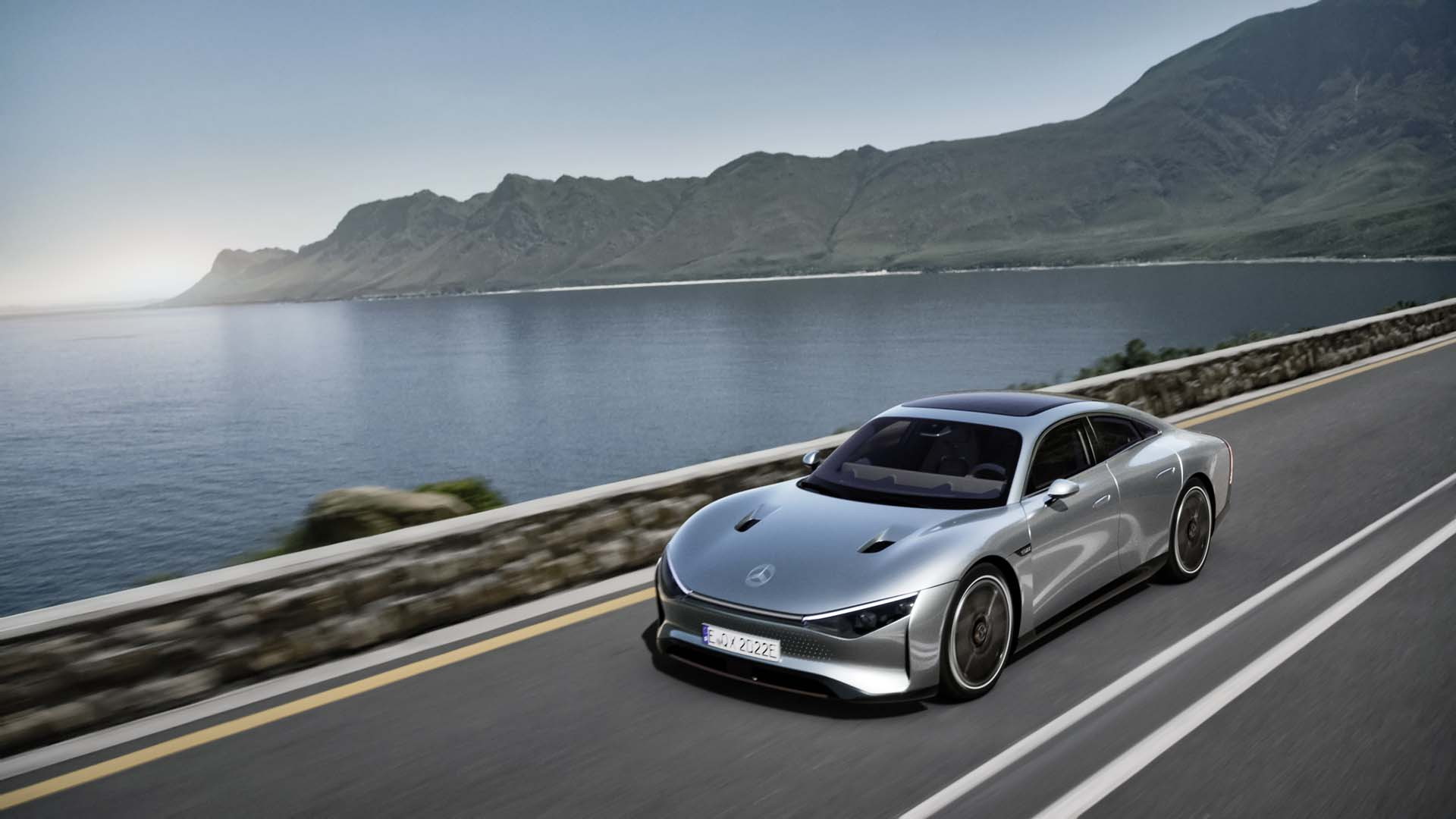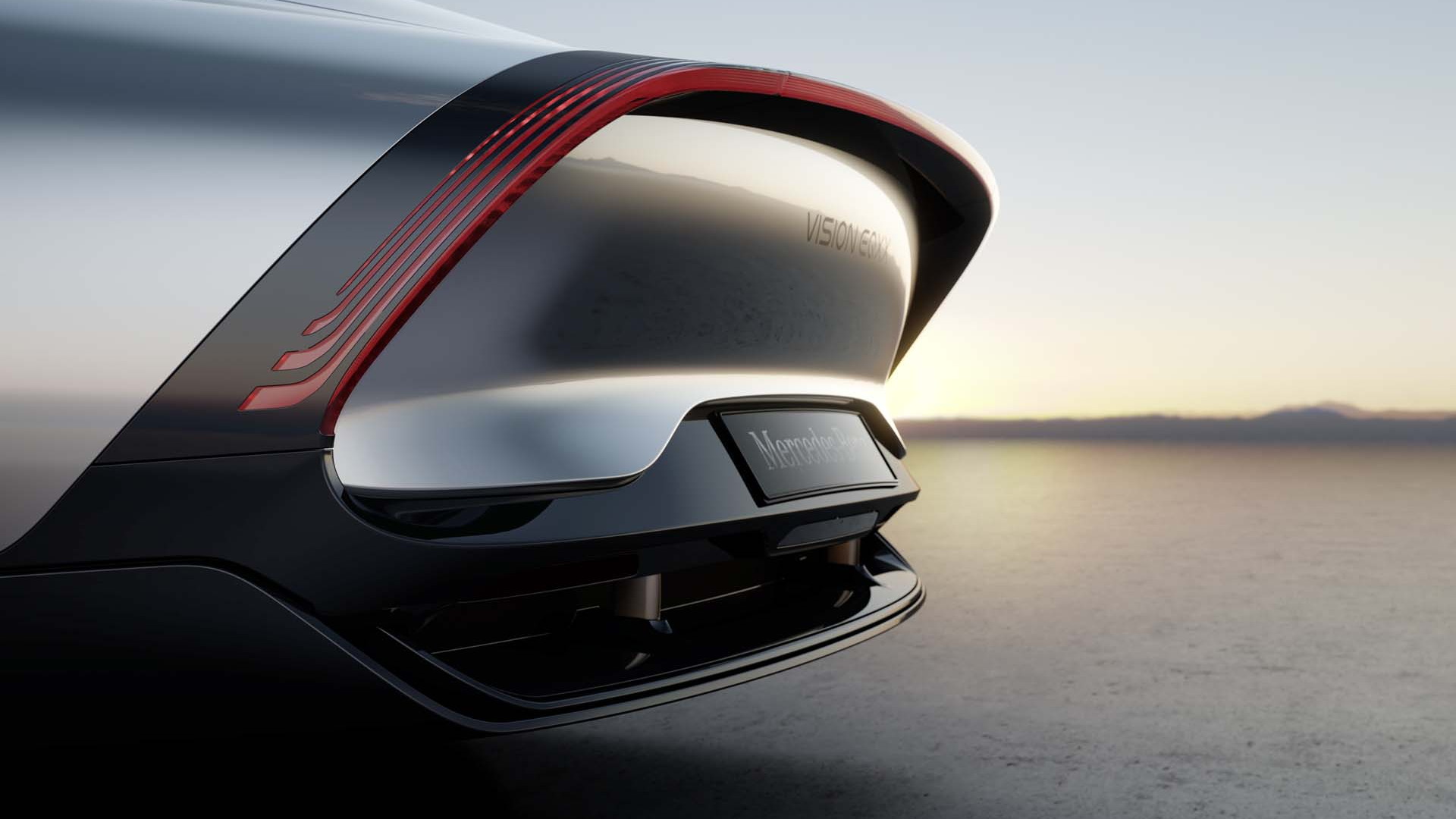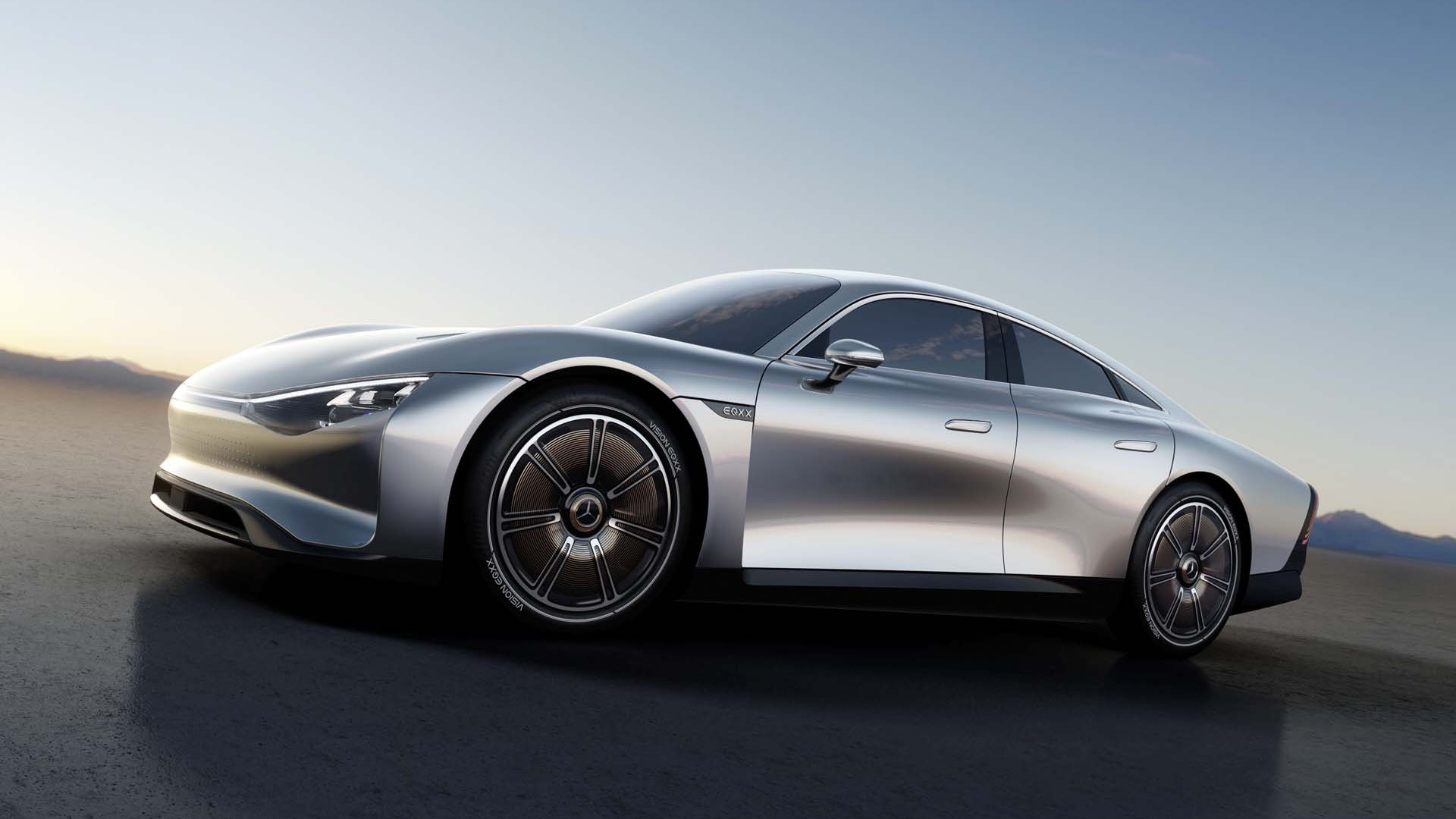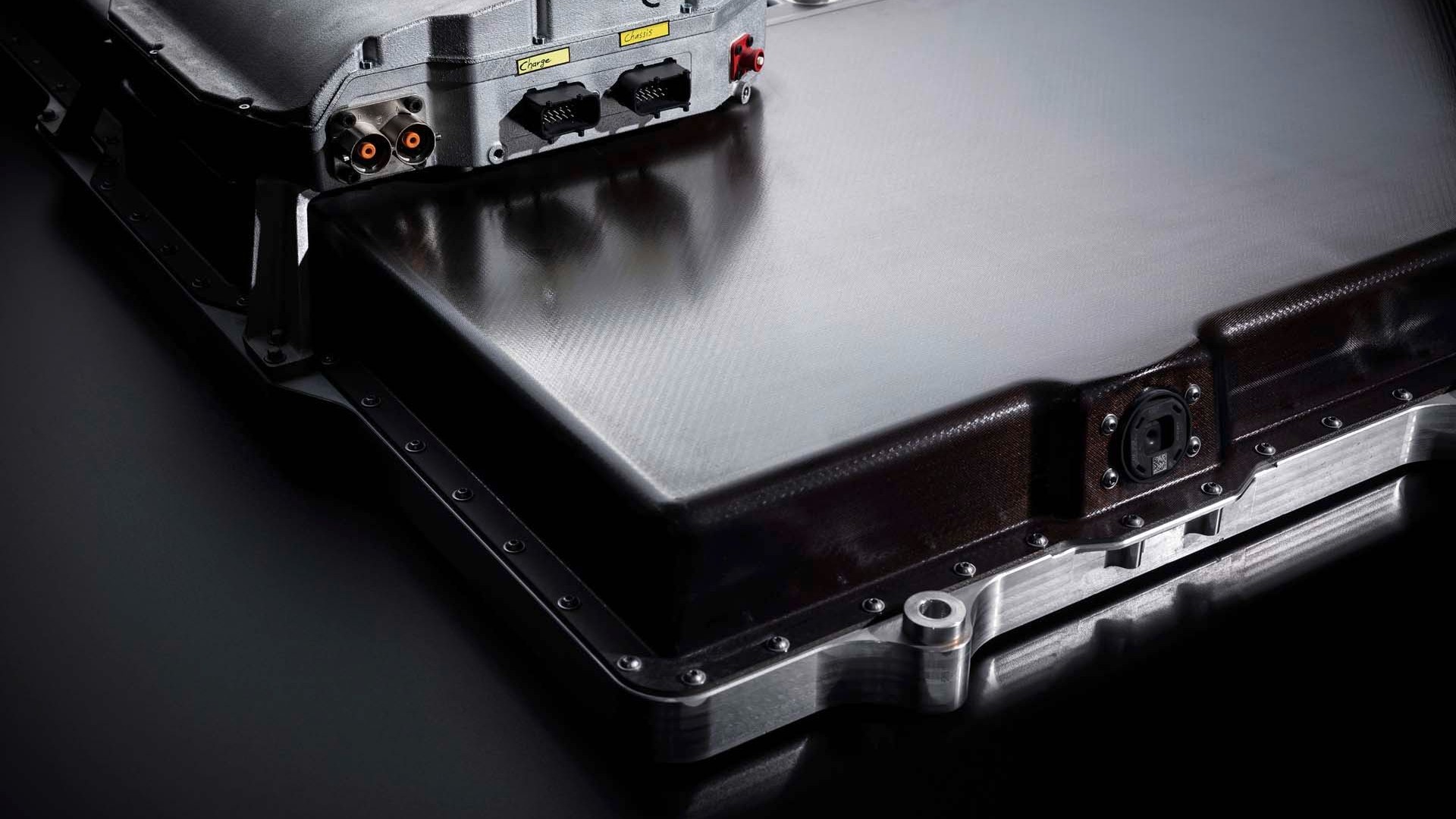Although the Mercedes-Benz EQS is a flagship already showing the world how luxurious long-range electric cars can be, it’s just the ice breaker.
The company's true next-level EV innovation is due to arrive in 2024, and it was revealed on Monday in the form of the Vision EQXX concept.
While the EQS fastback and EQE sedan, and the upcoming EQS SUV and EQE SUV, are all to be built on its electric vehicle architecture (EVA), the rest of the compact and mid-size models from Mercedes-Benz coming later in the decade will be built on a set of underpinnings called Mercedes-Benz Modular Architecture (MMA)—previewed in the EQXX.
The EQXX, which builds on the Vision IAA concept from the 2015 Frankfurt auto show, shows all the signs of being a geeky hypercar project—to the original definition of the term. Like the Volkswagen XL1, it’s light and lean and aiming for efficiency at every decision point.
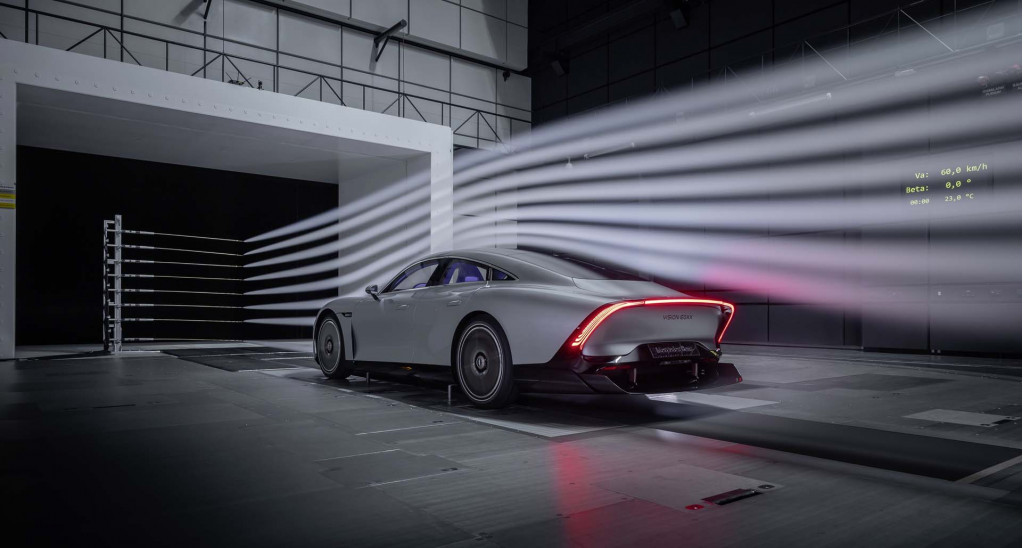
Mercedes Vision EQXX EV concept
With a battery pack of less than 100 kwh, Mercedes claims it can achieve a real-world range of more than 1,000 km (about 621 miles)—reminding us a bit of VW's 1-liter-per-100-km aims with the XL1.
And yet the two projects couldn't be more different with respect to production aims. In a series of Q&A sessions held Monday after the reveal, Mercedes-Benz executives explained that the EQXX isn’t as far-out as it looks.
“All the elements we see in this car will make it into series production,” said Markus Schäfer, Daimler AG chief technology officer and member of the Mercedes-Benz board of management.
From that time with Schäfer and Daimler AG chief design officer Gorden Wagener, we gained some first impressions of how deep these elements are coming along. The automaker could have a very compelling and competitive set of luxury EVs by mid-decade. Here are a series of tech points on how the EQXX concept hints of what’s to come:
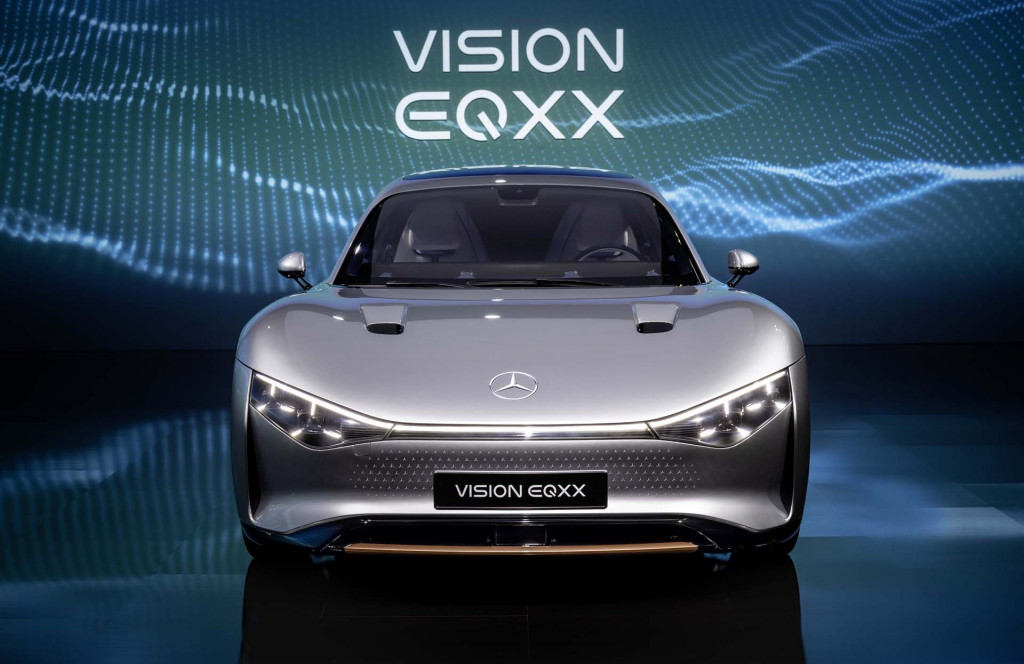
Mercedes Vision EQXX EV concept
Lightness is key. The EQXX is built on a 110.2-inch wheelbase, and is sized like the Mercedes-Benz C-Class or Tesla Model 3. Overall curb weight is 3,850 pounds, which if this carries over to production models would significantly undercut the curb weight of the Model 3 while offering more battery and range.
A big boost in range. Mercedes Is setting out to make a statement with the EQXX’s claimed 621 miles. “We think that range matters to our customers for quite some time,” until the charging networks improve, Schäfer said. “We’re talking about real-life range; that means certified range is more than, way more than, 1000 km in this space." The company now has the toolbox to deliver 1,000 km. But if it doesn’t, Schäfer explained, it can scale it down—cutting costs, easing supply-chain burdens, and losing weight.
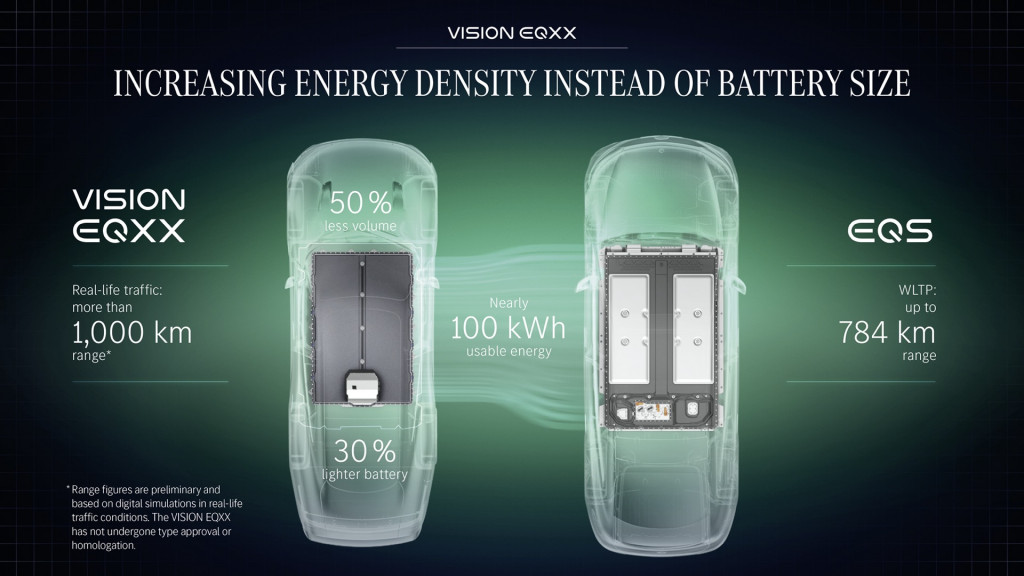
Mercedes EQXX concept energy density
Rethinking the battery. Mercedes says that compared to the battery pack in the EQS, this one is half the size and 30% lighter, while allowing nearly the same energy. The cells used in the EQXX will incorporate a “much tighter” cell-to-pack battery format that was influenced by experience gained in F1 racing. The cells alone offer a 20% boost in energy density versus those used in the EQS, Schäfer said, before allowing for the density gains of the pack design itself.
In-house electric propulsion. This marks the debut of the first e-drive system completely designed by Mercedes, in-house—including battery, e-motor, and software. Schäfer outlined that it’s running on test benches now and will be tested on real-world roads within a few months in the EQXX, with small-scale permissions from regulators.
Help from F1 racing. Schäfer said that it moved its e-drive development back in house because its engineers had so many ideas to take motor efficiency to a next level. Once it tackled that, it aimed to redesign the inverter given experience from Formula One racing, incorporating silicon carbide technology. It also brought software and software development in-house. The result, it claims, is an astounding 95% battery-to-tires efficiency.
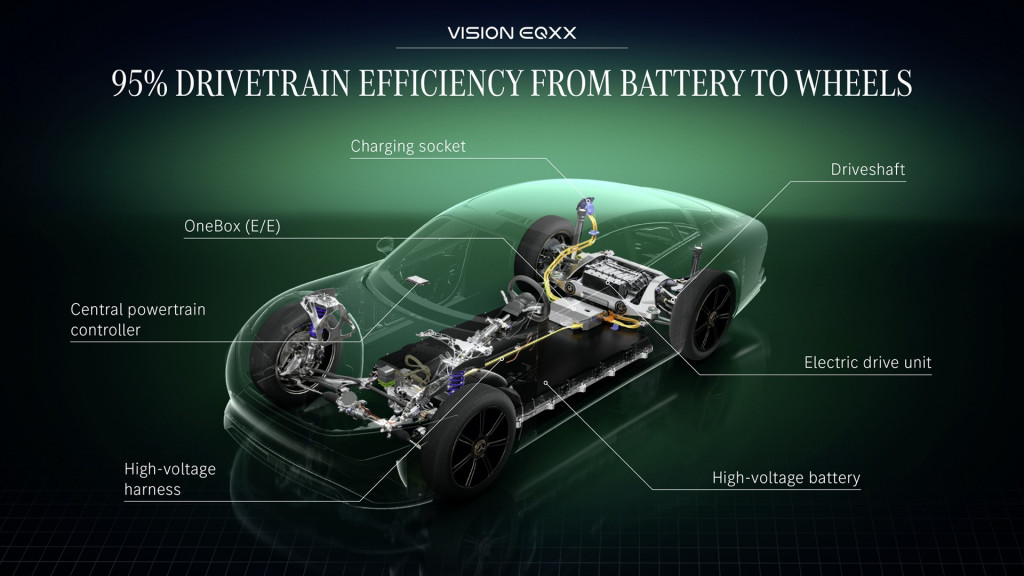
Mercedes EQXX concept efficiency
Multiple battery chemistries, modular motor systems. Mercedes plans to offer multiple battery chemistries, depending on the range needs and the price point, along with varied power outputs that could bring up to 500 kw (671 hp). And that’s before seeing what AMG adds to this scalable, modular system, Schäfer hinted.
All-wheel drive available, but rear-wheel drive tops efficiency scale. The one-motor concept makes the most sense to permit the lowest energy consumption possible, said Schäfer, while using the space under the hood for other purposes.
Cast body with cell-to-pack. Mercedes will debut a BionEQXX casting process that shapes much of the rear structure of the vehicle in one casting, incorporating the battery housing within a subframe of the cast structure. Schäfer assured us that the process is bound for series production.
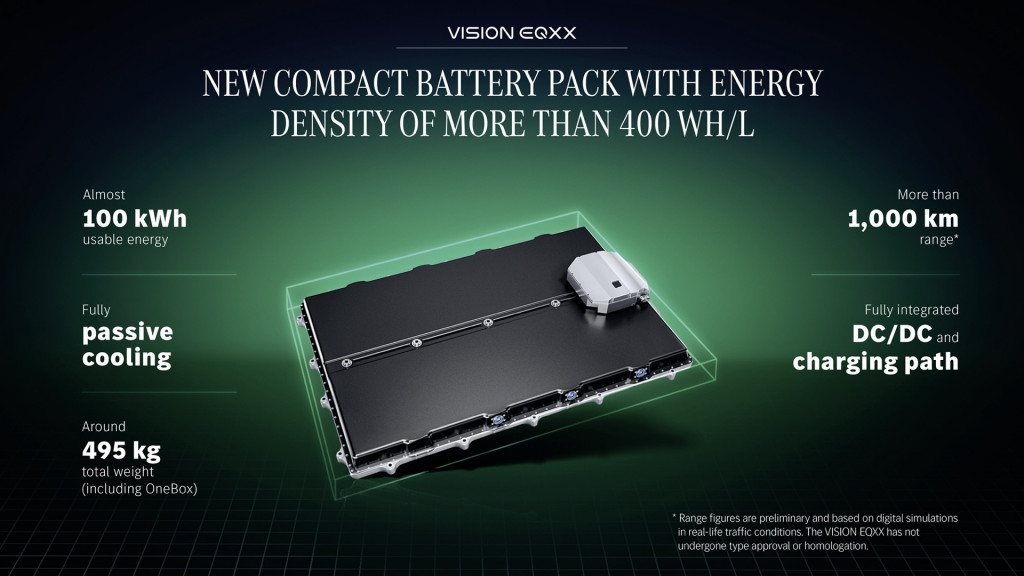
Mercedes EQXX concept battery
Back to an air-cooled battery? With the MMA vehicles Mercedes will likely shift away from liquid battery-pack cooling in favor of a “passive,” air-cooled approach. The strategy will involve intelligent cell management throughout the pack, plus an integrated cooling plate at the bottom, combined with vents that open as temperature climbs, explained Schäfer, who called it a “natural cooling of the battery.” Again here, he explained, the aim is to save energy, because pumping liquids through a system would cost more energy.
Fast charging—with some tricks to come. Initially with this strategy Schäfer said that vehicles would be able to recover about 300km (186 miles) of range in 15 minutes—not as rapid as the pack in the EQS, but not much slower either. “With this kind of system, the number one priority for us is range,” said Schäfer, hinting that there would be more news related to the MMA platform and even faster charging.
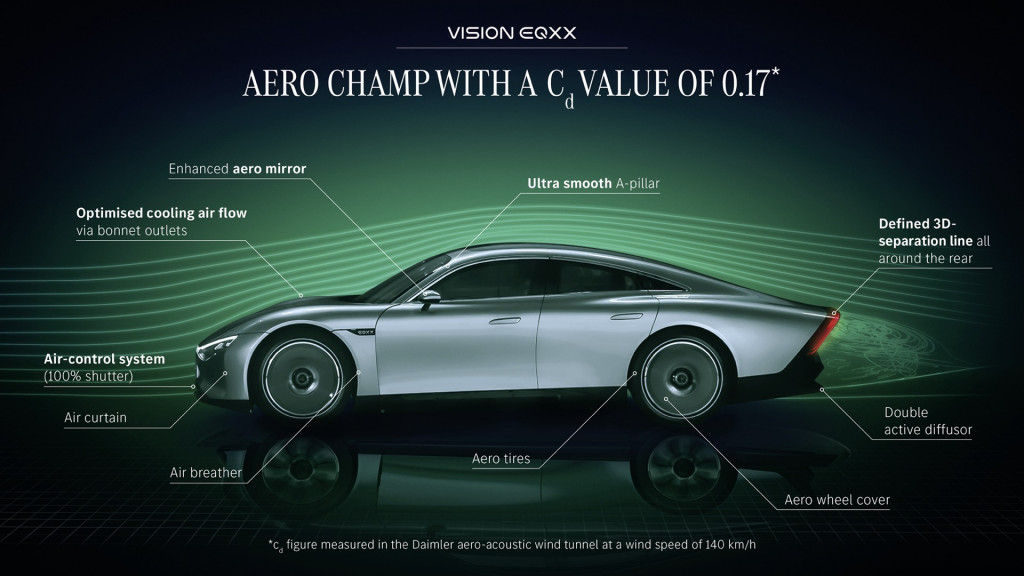
Mercedes EQXX concept aero
More active aero. The EQXX has an extraordinary coefficient of drag of 0.17. We’ve seen plenty of models with active grille shutters, but expect a whole new level of active aerodynamics when MMA models arrive in 2024 and 2025.
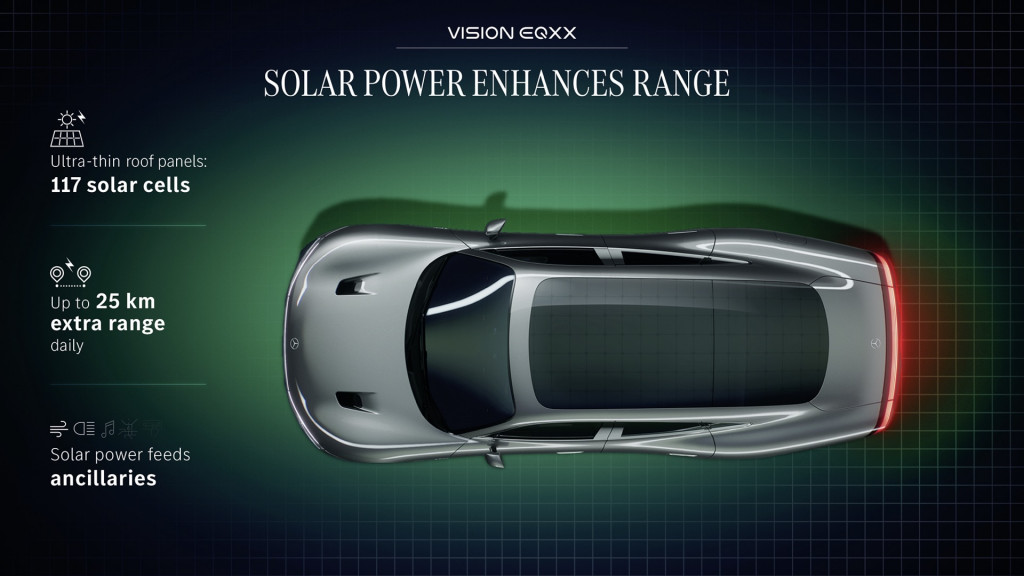
Mercedes EQXX concept solar roof
A solar roof. According to Schäfer, the company plans to put solar roofs into its production cars starting in 2024. “The solar roof will be a very important element of the future,” he said, foreseeing a time when customers will have a choice between a glass roof—like that offered on the EQS, perhaps—and a solar roof. Mercedes hinted that a solar roof in the EQXX could recover up to 25 km (16 miles) per day. That’s a very different decision than Toyota and Hyundai, which recently both decided not to bring a solar roof for U.S. customers in the bZ4X and Ioniq 5, respectively.
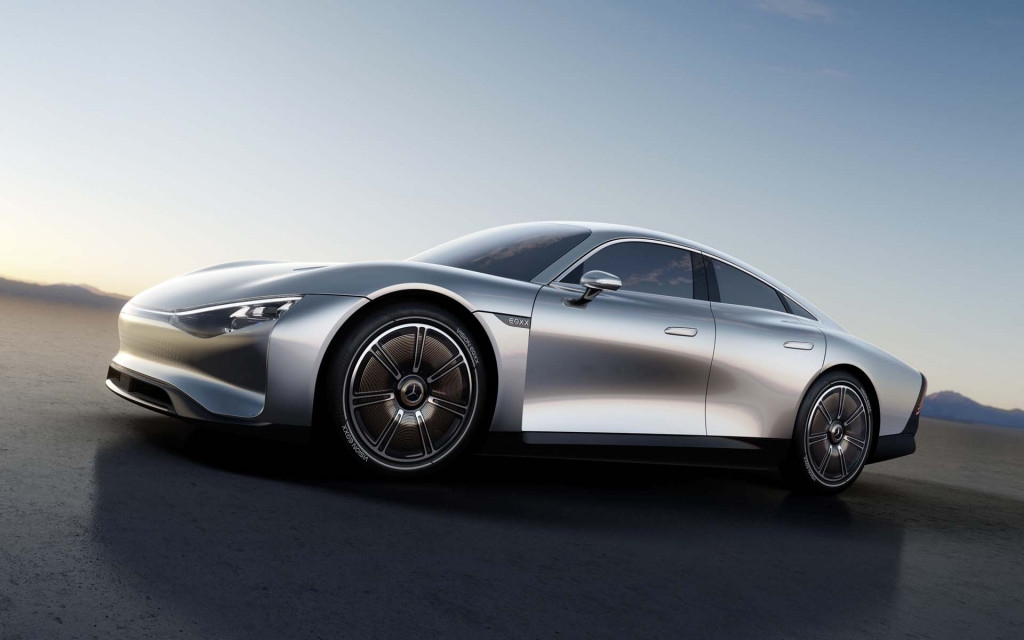
Mercedes Vision EQXX EV concept
Taller tires. “We were able to come up with a new concept here, with new partners for a next-generation tire,” Schäfer said. With the goals of low rolling resistance but good handling performance, Mercedes is helping drive that development. Wagener noted that the project arrived at a larger, taller tire with the car’s rear track actually a bit narrower than the front track, so they can pass through the wind channel.

Mercedes Vision EQXX EV concept
Hyperscreen horizon. Mercedes takes some of the ideas from the Hyperscreen interface that just launched in the EQS and goes horizontal here, with a completely seamless screen spanning 47.5 inches from one front pillar to the other. Wagener calls it a “high-tech luxury approach,” comparing it to older Bang & Olufsen designs. A game engine helps create a whole new fluid user experience that’s as immersive—or simple—as the user wants.
